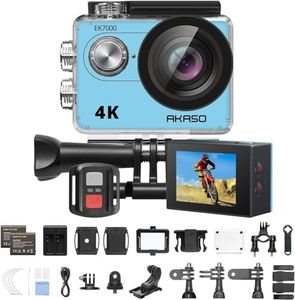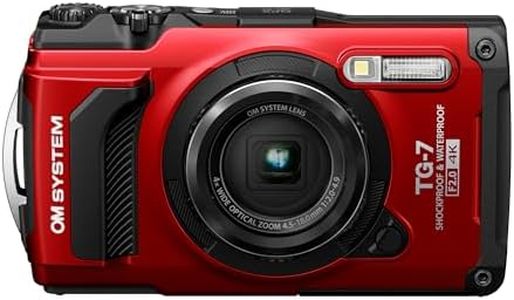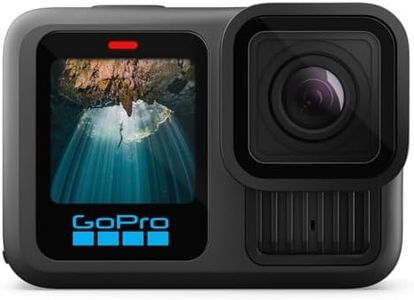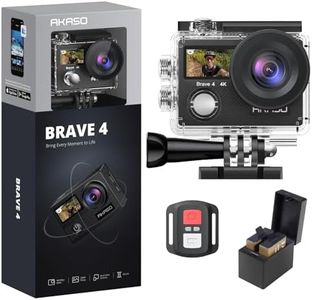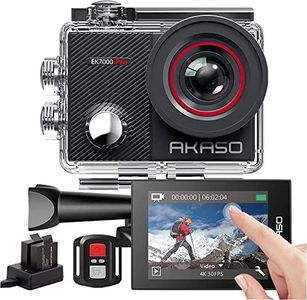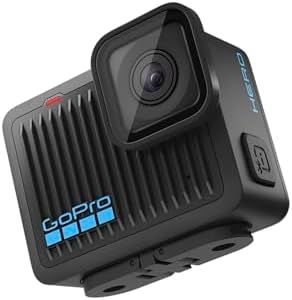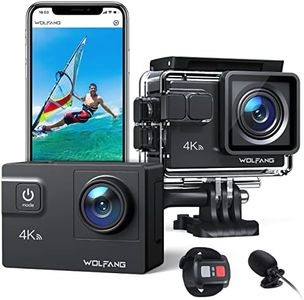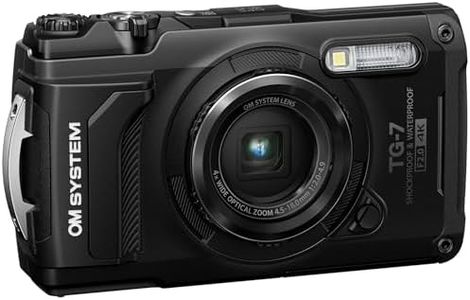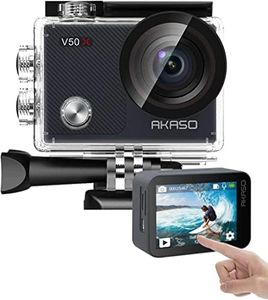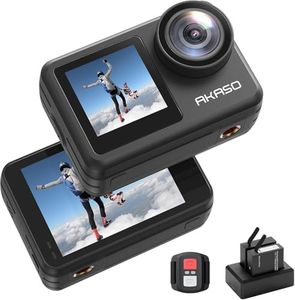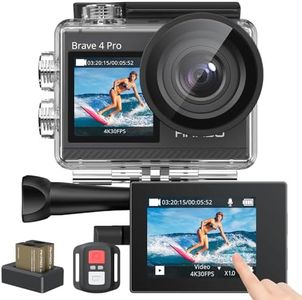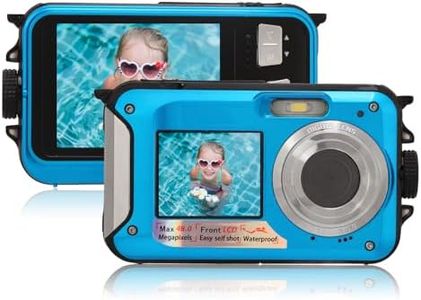We Use CookiesWe use cookies to enhance the security, performance,
functionality and for analytical and promotional activities. By continuing to browse this site you
are agreeing to our privacy policy
10 Best Underwater Dive Cameras
From leading brands and best sellers available on the web.By clicking on a link to a third party's website, log data is shared with that third party.
Buying Guide for the Best Underwater Dive Cameras
Choosing the right underwater dive camera can greatly enhance your diving experience, allowing you to capture amazing photos and videos beneath the surface. Before making a purchase, it's important to think about where and how often you will be diving, what kinds of photos or videos you want to take, and how comfortable you are with camera settings. Knowing what matters most to you will help you focus on key features and ensure you get a camera that fits your needs and skill level.Waterproof Depth RatingWaterproof depth rating tells you the maximum depth at which the camera can be safely used underwater without damage. This is crucial because pressures increase as you go deeper, and not all cameras can handle the same depths. Shallow-water cameras usually have ratings around 10 to 15 meters, which is fine for snorkeling or pool photography. For scuba divers, especially those exploring reefs or shipwrecks, a higher depth rating of 30 meters or more is essential. Advanced divers or those who plan to go deep should look for professional models rated to at least 40 meters or use separate underwater housings. To pick the right one, consider how deep you usually dive and always add a safety margin.
Image Quality (Sensor Size and Resolution)Image quality is mainly determined by the camera's sensor size and the number of megapixels (resolution). A larger sensor captures more light, resulting in clearer, more detailed images, especially in the dim lighting underwater. Higher resolution means more detail but also larger file sizes. Casual photographers may be happy with basic resolutions suitable for sharing on social media, while enthusiasts wanting to print large photos or crop details should look for higher resolution models and bigger sensors. Match the image quality to your intended use and whether you value convenience or maximum clarity.
Lens Options and ZoomThe lens affects how close you can get to subjects and how much of the scene you can capture. Fixed, wide-angle lenses are great for underwater environments because they let you get close to your subject, reducing the amount of water and particles between the lens and subject for clearer shots. Some cameras offer optical zoom, which helps for subjects that are harder to approach. If you plan to shoot small creatures (macro photography), look for a camera with macro modes or compatible with external macro lenses. The right choice depends on whether you prefer photographing wide underwater landscapes, close-ups of sea life, or a mix.
Controls and Ease of UseControls and interface matter because operation can be challenging underwater due to gloves, water pressure, and visibility. Simple menus, large buttons, and intuitive controls make it easier and safer to use your camera while diving. Beginners or those wanting hassle-free shooting should look for cameras with automatic modes and clear button layouts. More advanced users may appreciate manual controls for exposure and focus, which allow more creative photography. Consider your experience level and how much control you want when choosing a camera.
Video Recording CapabilitiesVideo recording quality is usually specified by maximum resolution (such as HD, 4K) and frame rates. Higher resolutions and smooth frame rates produce better, more detailed videos, which is valuable if you want to create memorable underwater movies. Occasional users might be fine with standard HD, while serious video creators should look for 4K options. Features like image stabilization and underwater color correction also help improve results. Decide if you want mainly photos, videos, or a balance; this will help you prioritize video features.
Battery LifeBattery life determines how many photos or the amount of video you can capture on a single charge. This is especially important underwater, where you can't easily change batteries during a dive. Some cameras are designed with larger batteries or power-saving modes for longer-lasting performance. If you tend to take long dives or shoot a lot during each outing, pick a model known for reliable battery life. It's wise to review typical shooting numbers to ensure they match your diving habits.
Compatibility with AccessoriesMany underwater cameras can be customized or enhanced with accessories like external strobes (flashes), video lights, filters, detachable housings, and lens attachments. The ability to add these accessories expands the creative possibilities and lets you adapt to different underwater conditions. If you think you may want to grow your skills or try new types of photography, ensure that your camera is compatible with popular accessories. Those just seeking simple operation might not need such upgrades, but flexibility is valuable for developing your passion.

